Thursday, January 13, 2011
 Binding a 10,000 page book is no small task! You can’t get your hands around all 10,000 pages at once so the book needs to be assembled into smaller units and then bound together using a specially constructed press to hold everything in place, nicely squared up, until the book text block is dry. Then there is the special challenge of making and attaching a book cover. The binding and cover must be strong and flexible so that the book can be opened and read. Finally, the book must be supported while reading, which can be done by using blocks to support the “shorter” side and adjusted as the reader turns the page. It generally takes about 3 hours to bind a 200-page book. This book took 24 hours spread over 4 days with a ½ day devoted to making a special press.
Binding a 10,000 page book is no small task! You can’t get your hands around all 10,000 pages at once so the book needs to be assembled into smaller units and then bound together using a specially constructed press to hold everything in place, nicely squared up, until the book text block is dry. Then there is the special challenge of making and attaching a book cover. The binding and cover must be strong and flexible so that the book can be opened and read. Finally, the book must be supported while reading, which can be done by using blocks to support the “shorter” side and adjusted as the reader turns the page. It generally takes about 3 hours to bind a 200-page book. This book took 24 hours spread over 4 days with a ½ day devoted to making a special press.
The text below describes the process that Bill Voss used. Feel free to skip the explanation and go straight to the slide show below at the end of the blog!
After research and consultation with others, Bill decided to use what we call a “perfect” binding, which is done by fanning the spine of a text block of loose sheets, applying PVA glue and then fanning the other way and applying more glue.
Since a two foot thick text block can’t be fanned all at once, Bill broke the text into 20 sections of five chapters (500 pages) each and glued them separately. A special press was constructed which would allow the sections to be jogged and hammered square to each other while under pressure. This press consists of a three sided box and press boards constructed from melamine particle board so as to accommodate the dimensions of the sections, which are a standard 8 ½ x 11”. After each section was glued up it was placed vertically between boards and pressed with clamps.
When all the sections were dry, kerfs (narrow channels) were sawn into them so that two sunken cords could be glued into the spine across its width to further strengthen the binding. All 20 sections were then assembled together in the press and clamped tightly while the cords and subsequent linings (kozo, cotton acrylic cloth, paper) were applied to the spine. Finally a large case was constructed and attached to the text block.
The finished binding is somewhat unwieldy, but can still be carried and opened to any point by a single person and can be supported while open by the simple expediency of placing a sufficient number of boards under one of the covers while the other cover rests on the table.
Kudos to Bill Voss, Bu Wilson and Dave Morice (Dr Alphabet) for working together to create, publish and bind the “Poetry City Marathon”.
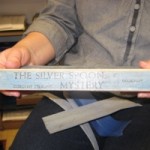
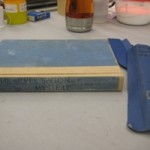
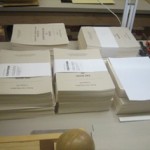
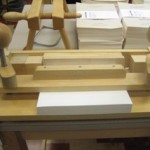
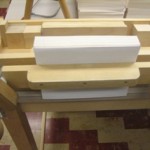
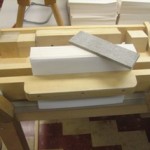
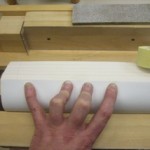
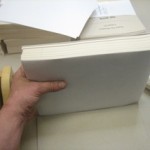
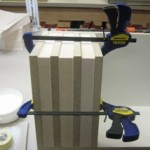
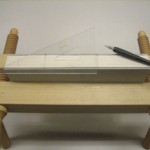
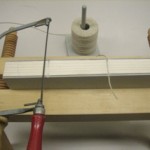
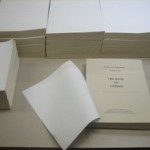
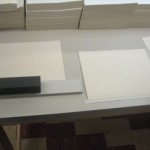
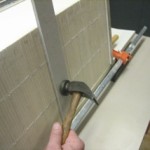
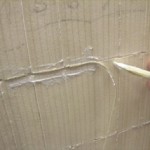

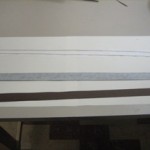
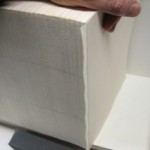
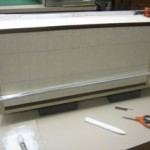
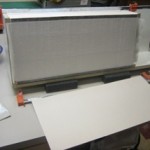
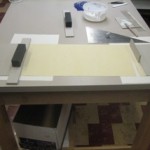

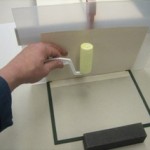
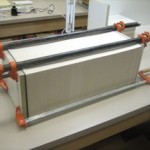
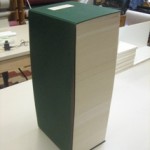
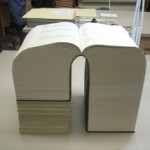
Hey, Bill,
Your added information and slide show are wonderful! They clearly show and tell the details of the impossible becoming possible and then becoming real. I really appreciate your binding the book in a single volume. Now if a virus destroys all my marathon files, I’ll know where to go to look them up. See you soon.
Dave Morice